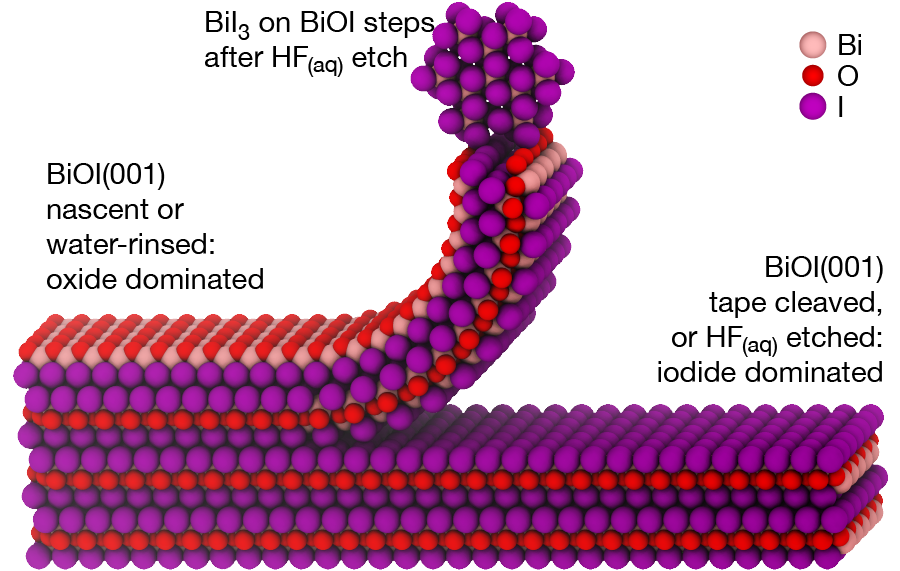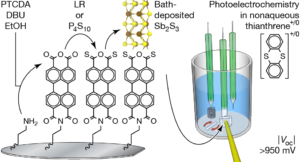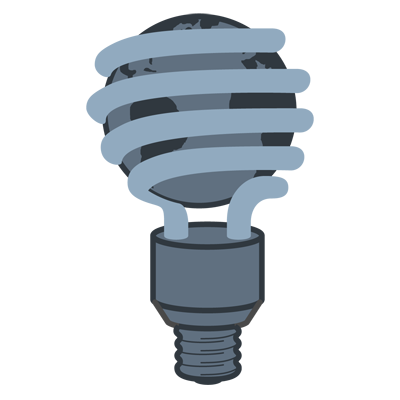Cmmercial, inexpensive tandem junction solar cells will likely involve silicon as a bottom light absorber material, so the top absorber material will ideally have a band gap between 1.7–1.9 eV. There are many materials with band gap energies in this range, but most of them are unstable in air and have been understudied in regards to passivation, fundamental carrier dynamics in “ideal” material, inexpensive deposition methods, and carrier dynamics in that inexpensively deposited material. Perovskites are certainly a compelling class of materials, but there are many others worth studying too!
We focus on Earth-abundant, non-toxic materials with band gap energies between 1.7 and 1.9 eV. Here are some papers that we have recently published in this area:
 Interfacial States, Energetics, and Atmospheric Stability of Large-Grain Antifluorite Cs2TiBr6
Interfacial States, Energetics, and Atmospheric Stability of Large-Grain Antifluorite Cs2TiBr6
Jocelyn L Mendes, Weiran Gao, Julia L Martin, Alexander D. Carl, N. Aaron Deskins, Sergio Granados-Focil, and Ronald L. Grimm
J. Phys. Chem. C, 2020, 124(44), 24289–24297.
10.1021/acs.jpcc.0c08719
 Quantification of Surface Reactivity and Step-Selective Etching Chemistry on Single-Crystal BiOI(001).
Quantification of Surface Reactivity and Step-Selective Etching Chemistry on Single-Crystal BiOI(001).
Julia L. Martin, Roy Stoflet, Alexander D. Carl, Katarina M. Himmelberger, Sergio Granados-Focil, and Ronald L. Grimm
Langmuir, 2020, 36(32), 9343–9355.
10.1021/acs.langmuir.0c00980
 Open-Circuit Photovoltage Exceeding 950 mV with an 840 mV Average at Sb2S3–Thianthrene+/0 Junctions Enabled by Thioperylene Anhydride Back Contacts.
Open-Circuit Photovoltage Exceeding 950 mV with an 840 mV Average at Sb2S3–Thianthrene+/0 Junctions Enabled by Thioperylene Anhydride Back Contacts.
Curtis W. Doiron, Nicholas A. Fitzpatrick, Clare P. Masucci, Julia L. Martin, Alexander D. Carl, and Ronald L. Grimm
ACS Omega, 2020, 5, 16875–16884.
10.1021/acsomega.0c02077

 Research
Research
 Energy
Energy
 People
People